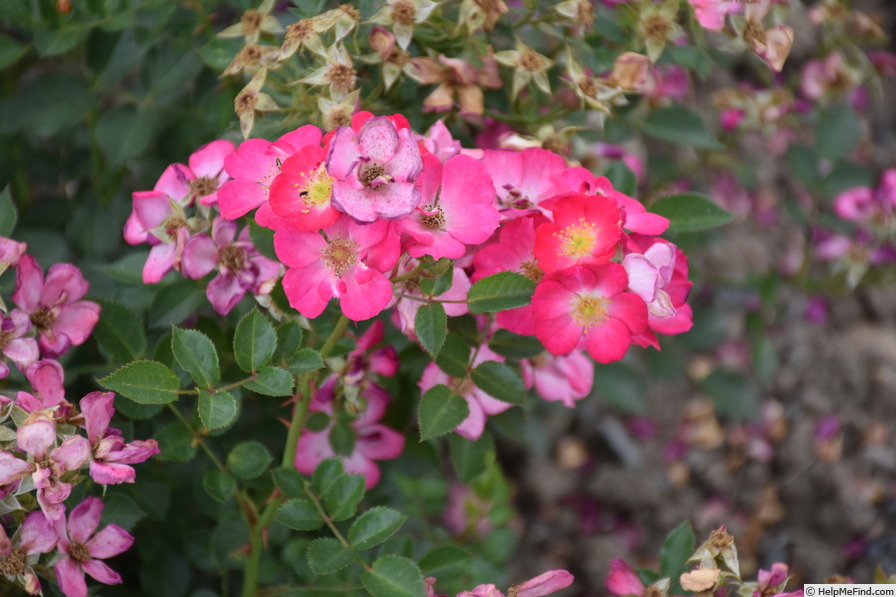|
|
'KORdwarul' rose Description

Photo courtesy of Johno
HMF Ratings:
29 favorite votes.
Average rating:
EXCELLENT.
ARS:
Deep pink Miniature. Exhibition name: Lupo ®
Class:
Miniature, Patio, Shrub. (Series: Vigorosa® Collection)
Bloom:
Purple to carmine-red, white center. [Pink blend.]. Deep purple to carmine red with white eye. None / no fragrance. 5 petals. Average diameter 1.25". Large, single (4-8 petals), cluster-flowered, in large clusters, flat to cupped bloom form. Blooms in flushes throughout the season. Pointed, ovoid buds.
Habit:
Bushy, compact, dense, upright. Small, semi-glossy, leathery foliage. 7 leaflets.
Height: up to 20" (up to 50cm). Width: up to 16" (up to 40cm).
Growing:
USDA zone 5a through 9b. Can be used for beds and borders, container rose or garden. Produces decorative hips. Disease susceptibility: disease resistant.
Patents:
United States - Patent No: PP 19,746 on 17 Feb 2009 VIEW USPTO PATENTApplication No: 11/893,515 on 15 Aug 2007 The new variety of rose plant of the present invention originated from a controlled crossing in a breeding program of two distinct parents during the summer of 1995. The seed parent was the result of a crossing of an `un-named seedling` and `KORlima`, a non-patented rose variety. The pollen parent was the result of crossing `KORmarie`, a non-patented rose variety and the offspring of an `un-named seedling` crossed with `KORgosa`, a non-patented rose variety.
Notes:
Dedicated in Laupheim where there is an annual Rose market. [Blooms in trusses Hips persist through winter]
|